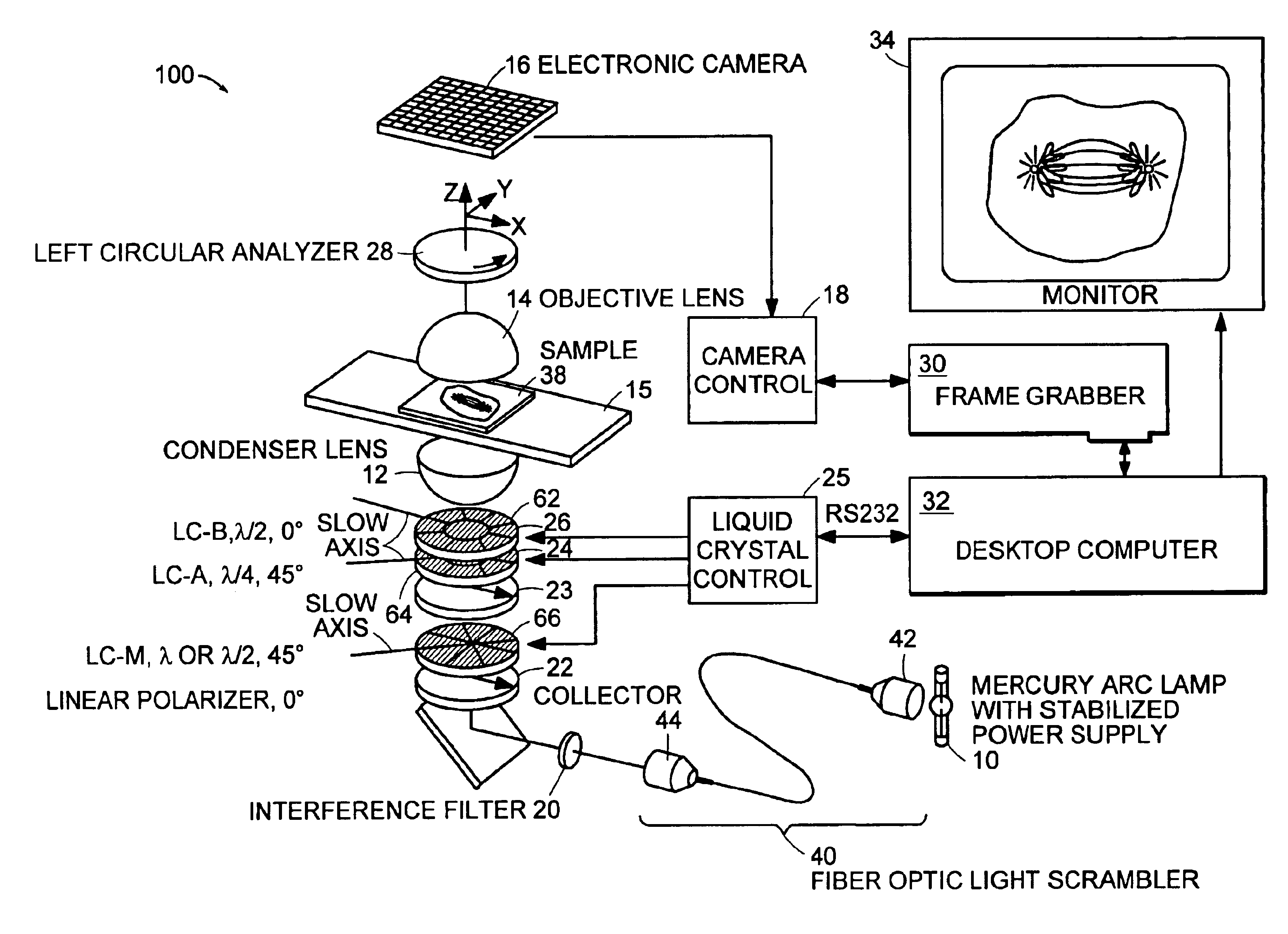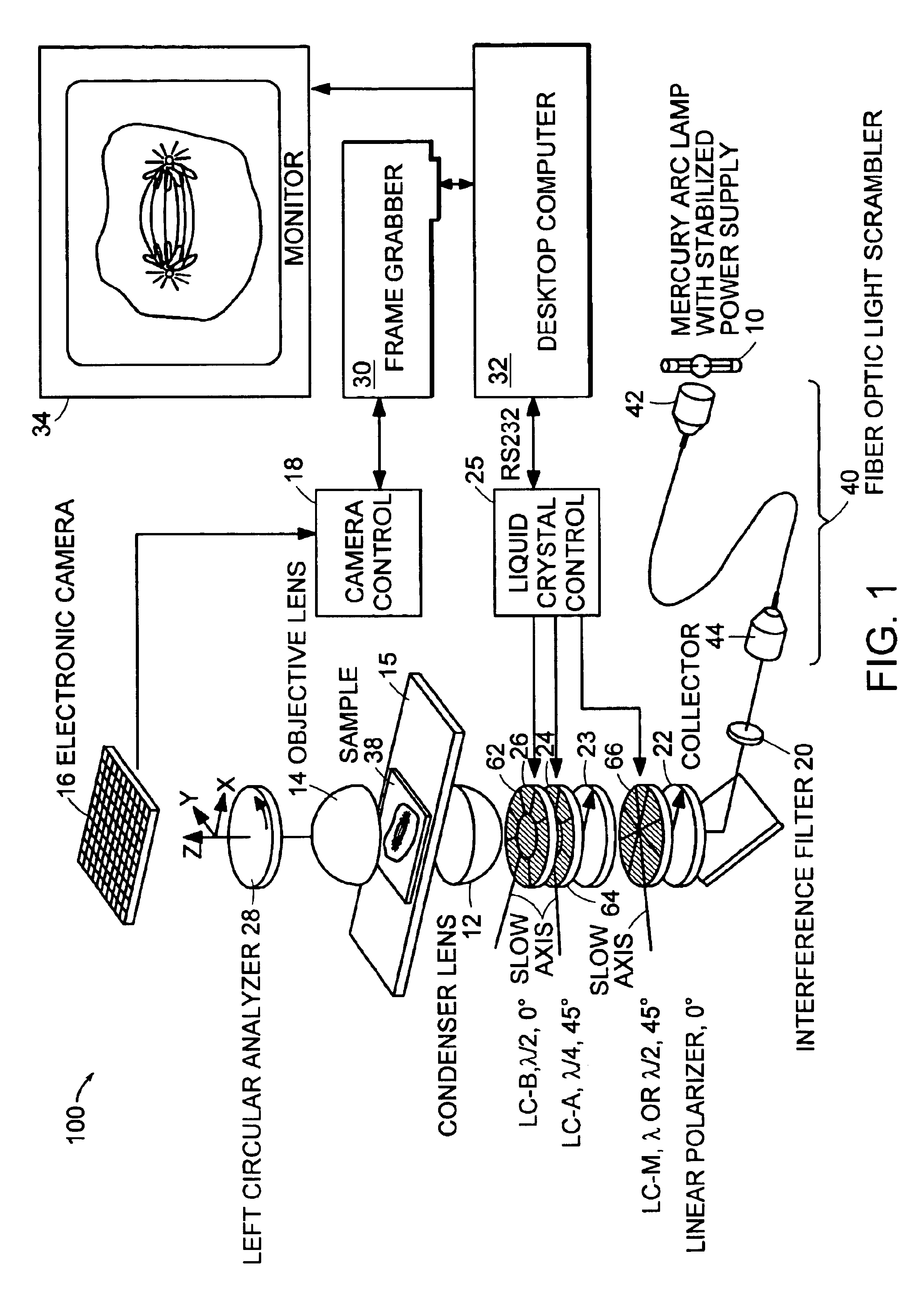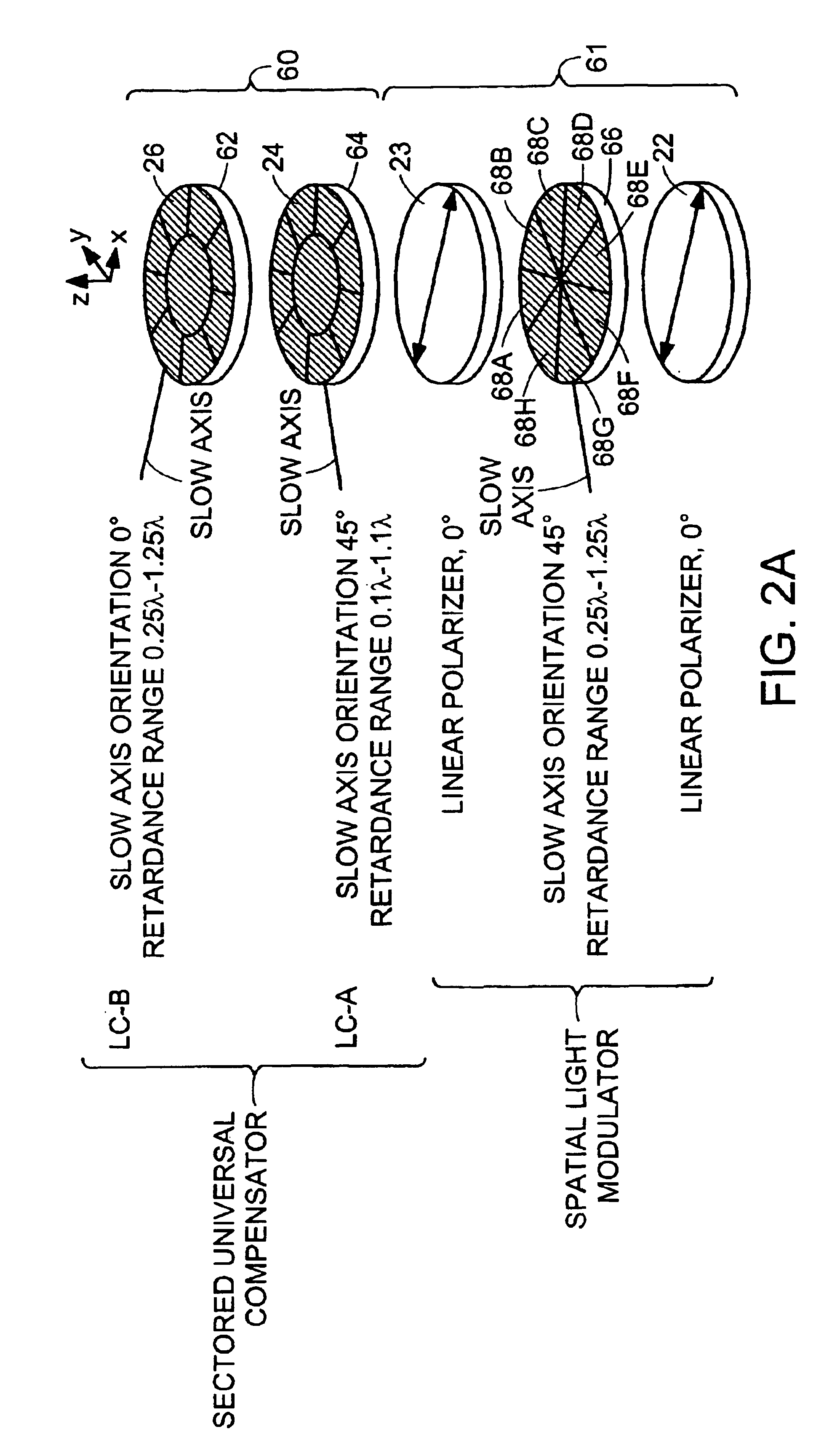Enhancing polarized light microscopy
a polarized light and microscopy technology, applied in the field of polarized light, can solve the problems of inordinately long measurement time, subject to errors, and relatively fast method
- Summary
- Abstract
- Description
- Claims
- Application Information
AI Technical Summary
Benefits of technology
Problems solved by technology
Method used
Image
Examples
Embodiment Construction
Systems
[0040]FIG. 1 illustrates an example 100 of an enhanced pol-scope of the present invention which includes sectored components as described below. The enhanced pol-scope of FIG. 1 is built using a conventional optical microscope such as a Zeiss Axiovert 200. In at least one embodiment, the enhanced pol-scope has, in addition to enhanced components as described below, one or more components that are described in U.S. Pat. No. 5,521,705 to Oldenbourg, et al., entitled “Polarized light microscopy” (“the '705 patent”). As described in the '705 patent, the conventional microscope includes a mercury arc lamp 10, a condenser lens 12, and an objective lens 14 (e.g., a 100×1.30-NA Plan Neofluar objective lens) on opposite sides of a specimen 38 on slide 15. The light from a specimen is directed to a video CCD camera 16 which provides signals to camera control 18 (e.g., a Dage-MTI model CCD-300).
[0041]As described below, the enhanced pol-scope includes enhancements to electro-optical com...
PUM
 Login to View More
Login to View More Abstract
Description
Claims
Application Information
 Login to View More
Login to View More - R&D
- Intellectual Property
- Life Sciences
- Materials
- Tech Scout
- Unparalleled Data Quality
- Higher Quality Content
- 60% Fewer Hallucinations
Browse by: Latest US Patents, China's latest patents, Technical Efficacy Thesaurus, Application Domain, Technology Topic, Popular Technical Reports.
© 2025 PatSnap. All rights reserved.Legal|Privacy policy|Modern Slavery Act Transparency Statement|Sitemap|About US| Contact US: help@patsnap.com



